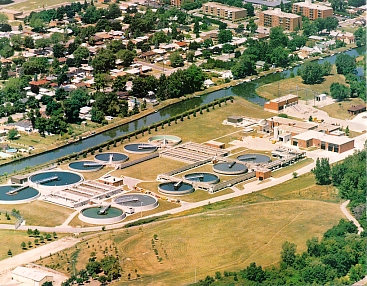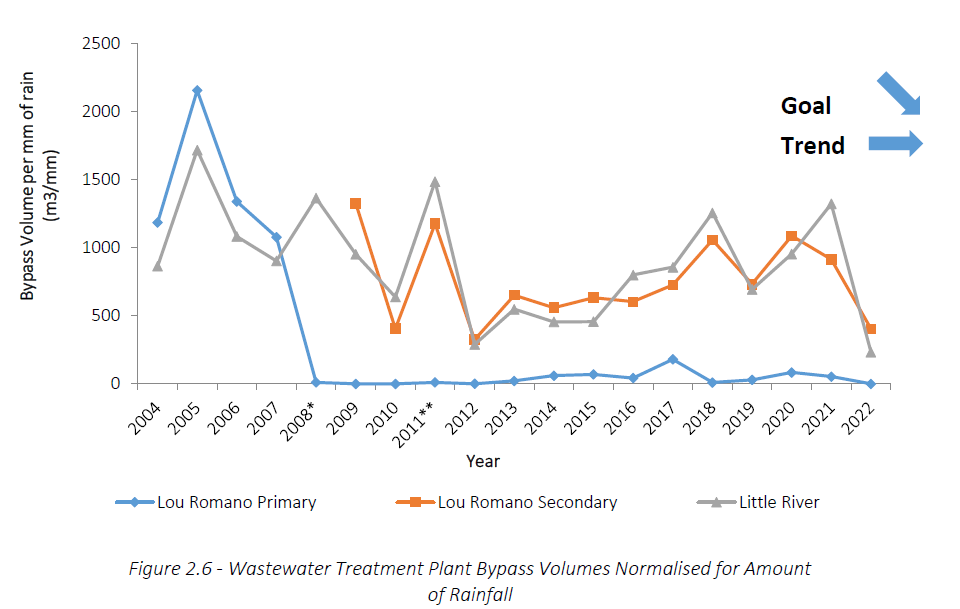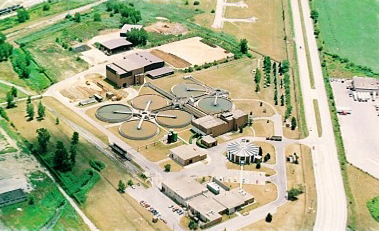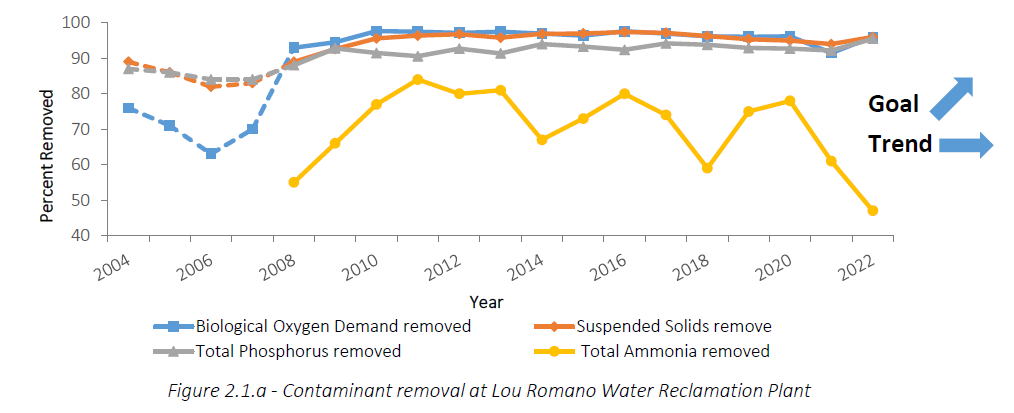Sewer and Wastewater Treatment Plant Infrastructure
Objective B1: Invest in our Sewers and Wastewater Treatment Plant Infrastructure
- Develop an education program on what causes sewer and treatment plant overflows and how they can be reduced (e.g. downspout disconnection to help remedy; fats, oils and grease, flushable wipes as causes).
- Develop a Sewer Use Master Plan that:
- Provides an understanding of how the City’s sewer network will respond to various rainfall intensities
- Determines flooding risks across the city
- Determines appropriate changes to stormwater management practices to reduce risk to the sewer network
- Investigate the potential for a retention treatment basin on the west side of Windsor.
- Continue to implement the City’s soft separation program (i.e. replacement of combined sewers).
- Continue to upgrade the City’s remaining “over/under” sewers.
- Enhance and enforce Windsor’s current Sewer Use By-Law.
These indicators show the progress the City is making to achieve this objective:
- Percent removal of total phosphorous, suspended solids, and the biological oxygen demand of treatment plant effluent
- Wastewater treatment plant bypass
- Sewer Use Master Plan
- Combined sewer outfall volumes based on annual rainfall
Wastewater Treatment Plant Bypass Indicator
What is a wastewater treatment plant bypass?
 A wastewater treatment plant bypass occurs when wastewater reaching a wastewater treatment plant exceeds the plant's design capacity, often due to a rain event. This data is tracked at both of Windsor's wastewater treatment plants. The City of Windsor operates two wastewater treatment plants: the Lou Romano Water Reclamation Plant and the Little River Pollution Control Plant. All bypass events at Windsor's treatment plants receive some level of treatment before discharge.
A wastewater treatment plant bypass occurs when wastewater reaching a wastewater treatment plant exceeds the plant's design capacity, often due to a rain event. This data is tracked at both of Windsor's wastewater treatment plants. The City of Windsor operates two wastewater treatment plants: the Lou Romano Water Reclamation Plant and the Little River Pollution Control Plant. All bypass events at Windsor's treatment plants receive some level of treatment before discharge. How are we doing?
Bypass volume per millimetre of rain (m3/mm):

As noted in the chart above, the bypass volume per millimetre of rain at both wastewater treatment plants has decreased.
Note:
- The number previously reported for 2008 Lou Romano Secondary Bypass has been removed as it was deemed to be an outlier.
- In 2008, the Lou Romano Water Reclamation Plant was undergoing an expansion of its primary treatment processes from 165 Megalitres to 275 Megalitres and upgrading the facility to include secondary treatment. The secondary treatment process experienced some difficulties during the initial operation phase resulting in a great amount of secondary treatment bypass.
- In 2011, total rainfall in Windsor measured 1,568.2mm compared to the average total rainfall of 805mm. This well-above-average rainfall contributed significantly to the bypass amounts at each plant in 2011.
- Rise in total amount of wastewater treatment plant bypass volumes post-2017 coincides with historically high great lakes and ground water levels which may have contributed to inflow into the system.
What is the City of Windsor doing to reduce wastewater treatment plant bypass?
- The three-phase Riverfront Pollution Control Planning Study investigated direct municipal discharges to the Detroit River along the riverfront area in the City of Windsor north of Riverside Drive and developed a pollution control strategy for the Windsor Riverfront District. The recommendations from this study have been completed or are underway.
- The Lou Romano Water Reclamation Plant has completed a $110-million expansion including upgrades to secondary treatment using cutting-edge technology such as Biological Activated Filter (BAF) process and Ultraviolet Disinfection.
- The City of Windsor has implemented a Downspout Disconnection Program in an attempt to divert clean rainwater, which is ideal for use in gardens and lawn care, before it reaches the sewers. Disconnecting downspouts reduces the amount of stormwater entering the sewer system, reducing the risk of combined sewer overflows. The City of Windsor has disconnected the downspouts of over 4,900 homes since 2011 and is on track to complete 5,000 by the end of 2020.
- The City of Windsor has completed construction of a Retention Treatment Basin (RTB). The RTB will provide capacity to retain a significant amount of the combined sewer overflows from the sewer systems between Ouellette Avenue and Walker Road.
- In 2012, the City of Windsor allocated funding to update the rainfall intensity duration and frequency (IDF) curves for the region. This will help us better prepare and design for the potentially wetter weather ahead.
- Flow monitoring and hydraulic modelling of the City's sewer system is taking place, which will help in developing a master plan for storm and sanitary sewers. The City has also purchased permanent flow monitoring equipment that will assist the City's treatment plants in making decisions to optimize capacity.
What can you do to help reduce wastewater treatment plant bypass?
- Disconnect any eavestrough downspouts connected to the storm sewer and redirect to your lawn or garden.
- Include "rain gardens" or areas where water is used in your landscaping to handle water from your downspouts.
- If you need to repave your driveway, consider using a permeable surface, such as gravel, interlocking brick, or specially designed paving stones to stop storm runoff onto the road.
- Conserve water: it is valuable.
- Use a rain barrel to collect rain water for gardening purposes.
- Install low flow shower heads and low flow toilets to reduce wastewater from your home.
- Learn more about the Basement Flooding Protection Subsidy Program and sump pump installations.
Quality of Wastewater Indicator
Why is the quality of wastewater important?
 Municipal wastewater contains contaminants such as suspended solids, biodegradable organics, pathogens and nutrients. Left untreated, these contaminants would enter our waterways, affecting our drinking water source and our fisheries, and reducing the recreational value of the waterways.
Municipal wastewater contains contaminants such as suspended solids, biodegradable organics, pathogens and nutrients. Left untreated, these contaminants would enter our waterways, affecting our drinking water source and our fisheries, and reducing the recreational value of the waterways.
Municipal wastewater treatment facilities are designed to reduce suspended solids, biodegradable organics and pathogens to acceptable levels prior to disposal. Additional wastewater treatment processes may be required to reduce levels of nutrients if the wastewater is to be discharged to a delicate ecosystem.
Many industrial wastewaters require pre-treatment to remove non-compatible substances such as heavy metals prior to discharge into the municipal system. Municipal wastewater treatment facilities are designed to treat municipal waste only.
The City of Windsor's Two Wastewater Treatment Plants
The Lou Romano Water Reclamation Plant (LRWRP) located on Ojibway Parkway was first commissioned in 1970 with many upgrades and improvements since. The LRWRP is a secondary, physical-chemical pollution control plant with a current primary treatment capacity of 273,000 m3/day and a secondary treatment capacity of 218,000 m3/day. The Little River Pollution Control Plant (LRPCP) located on Little River Boulevard was first commissioned in 1966 with expansions and upgrades occurring in 1974 and the 1990s. The LRPCP has two separate systems, the first with a capacity of 36,400 m3/day and the second with a capacity of 27,300 m3/day.
How are we doing?
Lou Romano Water Reclamation Plant Removal Efficiency (Percent Removed)

As shown in the chart above, the percentage of contaminants removed from wastewater at the Lou Romano Water Reclamation Plant has remained steady. Note: In 2007, the Lou Romano plant began measuring Carbonaceous Biological Oxygen Demand (BOD) in its effluent in place of Total BOD. This does not allow for a completely direct comparison.
Little River Pollution Control Plant Removal Efficiency (Percent Removed)
What is Biological Oxygen Demand?
What are suspended solids?
What is Phosphorus?
What is the City doing to improve the quality of wastewater?
- A major responsibility of the Pollution Control Laboratory is enforcing the Sewer Use By-Law. This by-law regulates discharges to sanitary and storm sewers. It also mandates the report of spills to City sewers and the completion of a Waste Survey Report by industry.
- A $110 million expansion and upgrade to secondary treatment using cutting-edge technology such as Biological Activated Filter (BAF) process and Ultraviolet Disinfection at the Lou Romano Water Reclamation Plant is now complete.
- The City of Windsor continues to collaborate with the Great Lakes Institute for Environmental Research at the University of Windsor. Several environmental studies are initiated through this partnership, including bio-monitoring of the treated waste water.
What can you do to help improve wastewater quality?
- The wastewater treatment facilities are designed to treat human waste: do not dispose of fats, oils, grease, gasoline, plastic, rags, chemical or pharmaceuticals down the drain. The Household Chemical Waste Depot located at the Waste Transfer Station off Central Avenue will accept old chemicals, paint, pesticides, etc. Expired or unused pharmaceuticals should be returned to the pharmacy for proper disposal.
- Maintain your vehicle. One drop of oil can contaminate 25 litres of water.
- Minimize or eliminate the use of pesticides for cosmetic purposes. Approximately 60 to 90 percent of pesticides and fertilizers placed on lawns end up in the sewers.
- Use compost in place of commercial fertilizers.
- Use only the recommended rates when applying fertilizer and avoid using before a forecasted rain.
- Use phosphorus-free laundry and dish detergents.
- Reduce the use of household chemicals.
For more information on Environmental Initiatives
Email: emp@citywindsor.ca

